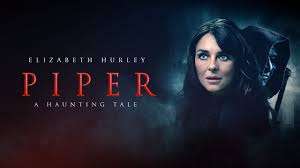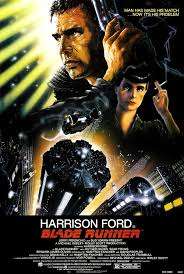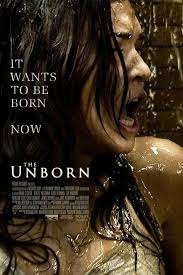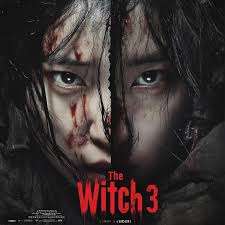In Piper (2024), director Anthony Waller reaches into the dusty folklore of medieval Germany and pulls out a sinister, breathing nightmare. Taking the legend of the Pied Piper of Hamelin and repurposing it as the core of a psychological horror-thriller, Waller attempts something few filmmakers dare: to merge fable and familial trauma in a way that feels both relevant and chilling. The result is a film that’s equal parts haunting, frustrating, and unforgettable.
The Premise: A Town Cursed by Secrets
Elizabeth Hurley plays Liz Haines, a high school teacher looking for a fresh start in the picturesque but eerie town of Hamelin, Germany. She relocates with her teenage daughter, Amy (Mia Jenkins), hoping to bury painful memories and rebuild their lives. But Hamelin is no ordinary town, and its history is soaked in superstition, silence, and song.
Before long, Liz and Amy find themselves entangled in the town’s dark past—one rooted in a centuries-old betrayal tied to the legend of the Piper, a mysterious figure who once rid the town of rats, only to take its children when his payment was denied. The Piper, it turns out, is more than just a folktale. He’s back, and he’s after unfinished business.

A Horror Film Built on Guilt and Grief
At its core, Piper is about generational guilt. The film leans into the idea that the sins of the parents are revisited on their children. Liz, fleeing a checkered past, is a woman burdened with secrets. The film doesn’t reveal them all at once—Waller slowly peels back layers of Liz’s trauma, making the eventual reveal as disturbing as it is tragic.
Amy, caught in the crossfire, becomes a symbol of innocence under siege. Her descent into fear mirrors the town’s own descent into supernatural chaos. As the Piper’s influence grows, rats swarm, children vanish, and the town begins to unravel. The film’s allegorical weight rests heavily on the shoulders of these two characters, and thankfully, both actresses deliver.
Elizabeth Hurley, Recast in Horror

Hurley, known more for glam roles than genre work, is a surprise hit here. Her portrayal of Liz is more nuanced than expected—gritty, maternal, and emotionally raw. There’s a weariness in her performance that makes Liz feel lived-in, someone who’s constantly wrestling with choices she can’t undo.
Mia Jenkins, playing her daughter, holds her own. She nails the teenage mix of frustration and fear, and her character’s arc—from sullen newcomer to terrified believer—is one of the film’s strengths. Their mother-daughter bond grounds the film emotionally, and it’s their scenes together, often tense or heartbreaking, that stick longest after the credits roll.
Aesthetic: Fairy Tale Dread Meets Urban Legend
Waller makes good use of Hamelin’s gothic architecture and fog-choked forests. The cobblestone streets and looming towers lend the film a fairy tale visual tone—one part Grimm, one part modern thriller. The cinematography by Andreas Thalhammer is moody and stylish. Warm candlelight and murky shadows clash in nearly every scene, underscoring the film’s central dichotomy: the past bleeding into the present.
However, the film is at its best when it dials up the horror. The Piper, portrayed with minimal screen time but maximum menace, is a spectral figure. His appearances are marked by a disturbing melody—a flute song that slithers into the frame before he does. That sound, designed by Wilbert Hirsch, becomes the film’s true antagonist. It is everywhere. In dreams. On the wind. In cracked radios and hallway echoes. It’s a chilling touch that reinforces the idea that the Piper isn’t just a man—he’s a curse.
Flaws: Ambition Outrunning Execution

For all its ambition, Piper isn’t without issues. The pacing falters in the middle act, where the story gets tangled in its own mythology. Waller tries to weave in modern teenage drama, romance, and town politics alongside the horror. Some of these threads—especially a subplot involving a rebellious local teen who becomes Amy’s love interest—feel half-baked and distract from the central narrative.
Likewise, the film’s climax feels rushed. After a solid buildup of tension, the final confrontation with the Piper is visually chaotic and narratively thin. The mythology of who the Piper is, how he was wronged, and why he returns isn’t explored with enough depth to fully satisfy. There’s a lot of implication but not enough revelation. For viewers looking for tight, plot-driven storytelling, this may frustrate.
There’s also a reliance on horror tropes: flickering lights, locked doors, the inevitable “don’t go down there” moment. While Waller executes them competently, they occasionally feel like placeholders instead of innovations.
Symbolism and Psychological Horror
Where Piper succeeds best is in its atmosphere and symbolic weight. The idea that trauma, when buried, doesn’t die—it returns—is embodied in nearly every frame. The Piper isn’t just a ghost; he’s a personification of guilt, retribution, and generational pain. His presence forces Liz to confront what she’s running from, and forces the town of Hamelin to reckon with its own history of looking away.
That’s where the film finds power. Piper isn’t just about a spooky man with a flute. It’s about what happens when communities refuse to confront their darkest moments. It’s about the price of silence, and how no one, especially not the innocent, escapes the fallout.
Verdict: Worth the Watch
Piper is a flawed but fascinating horror film. It swings for the fences in terms of theme and atmosphere, even if it doesn’t always connect. With strong performances, striking visuals, and a chilling sound design, it offers a fresh take on a well-worn legend. Horror fans who prefer mood and metaphor over gore and jump scares will find much to appreciate here.
Is it a perfect film? No. But in a genre clogged with soulless remakes and derivative slashers, Piper stands out for its ambition, its performances, and its eerie commitment to confronting the past.
Rating: 7.5/10





